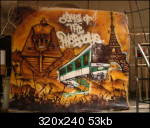Chemical mapping of a single molecule by plasmon-enhanced Raman scattering was accomplished by an international team of researchers from China, Spain, and Sweden:
Hefei National Laboratory for Physical Sciences at the Microscale, University of Science and Technology of China, Material Physics Center CSIC-UPV/EHU and Donostia International Physics Center DIPC, Spain,Theoretical Chemistry and Biology, School of Biotechnology, Royal Institute of Technology, Sweden.
Let me underline the scientific approach to ethics and probity as :
Competing financial interests:The authors declare no competing financial interests.
R. Zhang, Y. Zhang, Z. C. Dong, S. Jiang, C. Zhang, L. G. Chen, L. Zhang, Y. Liao, J. Aizpurua, Y. Luo, J. L. Yang & J. G. Hou
Figure 1. Schematic drawing of our home-built experimental setup.
This setup
is composed of four sub-systems: 1. a laser source for light excitation,
a dark-box for optical filtering and alignment, 2. low-temperature ultrahigh-vacuum
(UHV) scanning tunneling microscope (STM) for sample preparation
and characterization with 3. a built-in lens for both light excitation and
collection, and 4. a spectrometer equipped with a highly
sensitive CCD detector for Raman spectral measurements.
REFERENCE:
1. Chemical mapping of a single molecule by plasmon-enhanced Raman scattering, R. Zhang, Y. Zhang, Z. C. Dong, S. Jiang, C. Zhang, L. G. Chen, L. Zhang, Y. Liao, J. Aizpurua, Y. Luo, J. L. Yang & J. G. Hou,
Nature,498,82–86 (06 June 2013) doi:10.1038/nature12151







